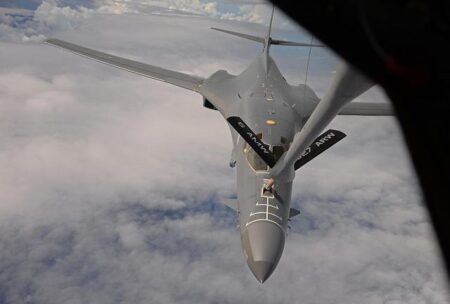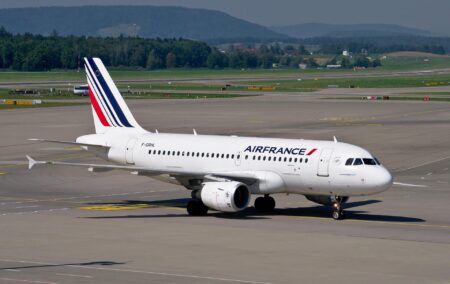The Aircraft Accident Investigation Bureau (AAIB) is set to determine the location for analyzing the black boxes recovered from the recent Air India plane crash, following a thorough evaluation of technical, safety, and security factors. As investigators prioritize a meticulous examination of the flight data and cockpit voice recorders, the decision on where to conduct the analysis will play a crucial role in uncovering the cause of the accident. The move underscores the bureau’s commitment to a transparent and comprehensive probe, amid mounting public and official scrutiny.
AAIB Weighs Technical and Security Factors in Selecting Black Box Analysis Location
The Aircraft Accident Investigation Bureau (AAIB) is currently evaluating multiple critical factors before finalizing the location for analysing the black boxes recovered from the Air India aircraft involved in the recent tragic crash. Authorities are prioritizing technical capabilities, safety protocols, and security measures to ensure a thorough and secure examination of the flight data and cockpit voice recorders. This careful assessment aims to uphold the integrity of the investigation and assist in drawing accurate conclusions about the cause of the accident.
Among the considerations under review, the AAIB is focusing on:
- Availability of advanced forensic and data extraction technology
- Controlled environments that minimize contamination or data loss
- Secure facilities equipped to prevent unauthorized access or tampering
- Proximity to relevant technical experts and aviation authorities
| Factor | Key Requirement | Impact on Decision |
|---|---|---|
| Technical Setup | Cutting-edge analysis equipment | Ensures accurate data retrieval |
| Safety | Contamination-free environment | Preserves data integrity |
| Security | Strict access controls | Prevents evidence tampering |
Ensuring Safety Protocols Drive Decision on Air India Crash Data Examination Site
The decision on where to analyze the black boxes of the ill-fated Air India flight hinges on stringent assessments of multiple critical factors. The Aircraft Accident Investigation Bureau (AAIB) is prioritizing technical capabilities, comprehensive safety measures, and robust security protocols before finalizing the examination site. This thorough approach aims to ensure the integrity of the investigation, safeguarding sensitive data against any potential compromise during the examination process.
Key considerations being meticulously reviewed include:
- Availability of state-of-the-art forensic analysis tools
- Expertise of technical personnel on-site
- Measures for maintaining chain of custody for evidence
- Physical security of the facility to prevent unauthorized access
- Compliance with international aviation investigation standards
The AAIB spokesperson emphasized that each element is vital to uphold the credibility of the probe while facilitating a transparent, error-free examination process.
| Criteria | Focus Area |
|---|---|
| Technical Capability | Advanced data retrieval & analysis tools |
| Safety | Secure handling & contamination-free environment |
| Security | Restricted access & evidence preservation protocols |
Experts Recommend Centralized Facilities for Enhanced Integrity in Flight Recorder Analysis
Specialists emphasize the criticality of utilizing centralized facilities when conducting flight recorder analyses to maintain the highest levels of data integrity and security. Such centralized approaches ensure that black boxes from accident sites are handled by expert teams equipped with standardized protocols and cutting-edge technology. This uniformity not only accelerates the investigative timeline but also minimizes risks related to data tampering or environmental contamination, which can occur in decentralized or unverified locations.
industry experts have laid out key factors that justify concentrating black box examinations in dedicated hubs:
- Enhanced Technical Capabilities: State-of-the-art decoding devices and software streamline accurate data retrieval.
- Robust Safety Measures: Controlled environments protect sensitive components from physical and electromagnetic interference.
- Heightened Security Protocols: Strict access control prevents unauthorized handling or data breaches.
| Criteria | Centralized Facility | Decentralized Analysis | ||||||||
|---|---|---|---|---|---|---|---|---|---|---|
| Technical Expertise | High | Variable | ||||||||
| Data Security | Strict Protocols | Risk Prone | ||||||||
| Analysis Speed |
Specialists emphasize the criticality of utilizing centralized facilities when conducting flight recorder analyses to maintain the highest levels of data integrity and security. Such centralized approaches ensure that black boxes from accident sites are handled by expert teams equipped with standardized protocols and cutting-edge technology. This uniformity not only accelerates the investigative timeline but also minimizes risks related to data tampering or environmental contamination, which can occur in decentralized or unverified locations. Industry experts have laid out key factors that justify concentrating black box examinations in dedicated hubs:
|




